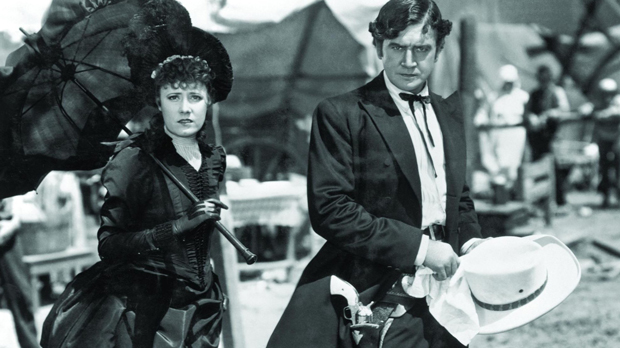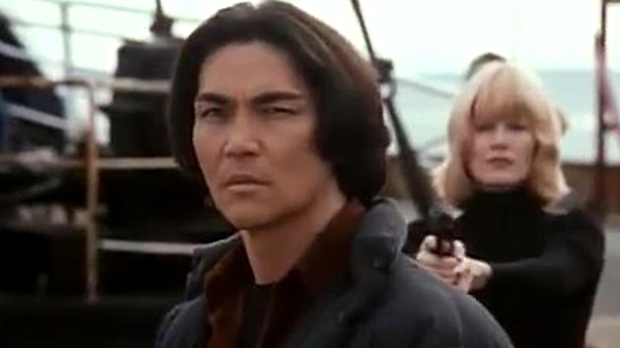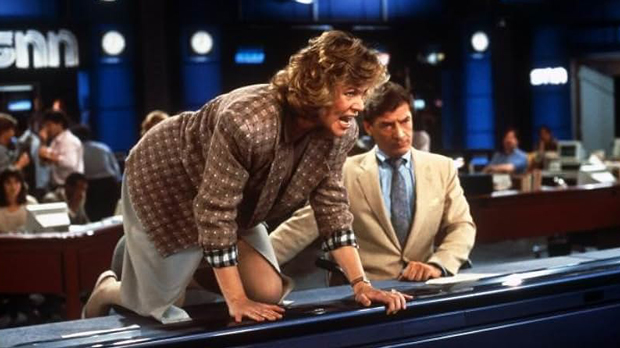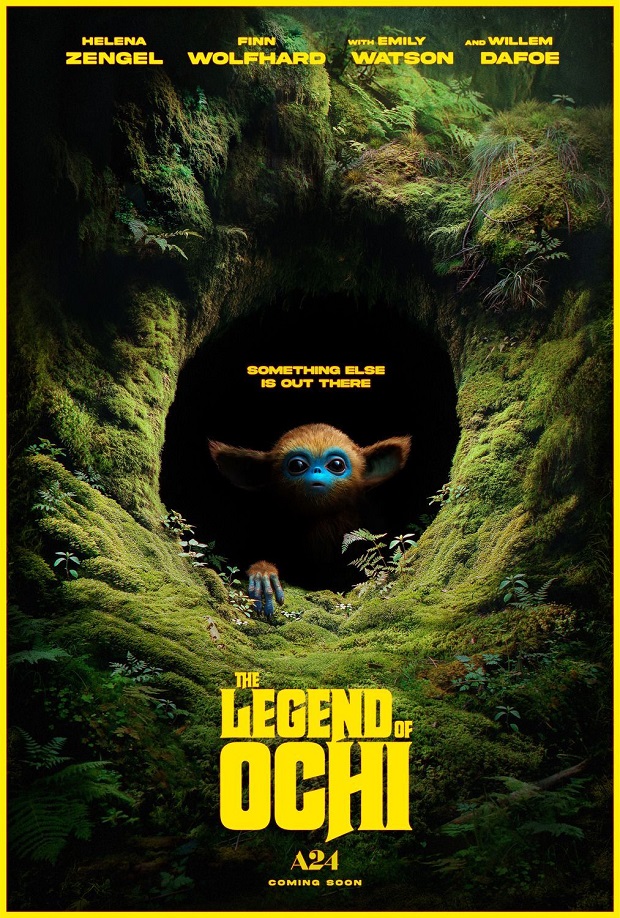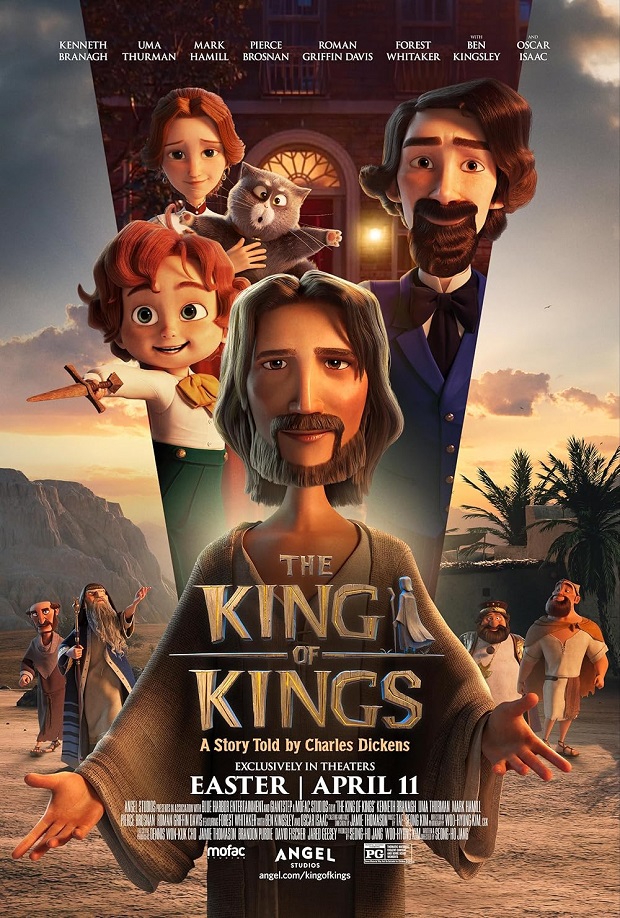 Cimarron (1931) RKO/Western-Drama RT: 124 minutes No MPAA rating (some violence) Director: Wesley Ruggles Screenplay: Howard Estabrook and Louis Sarecky Music: Max Steiner Cinematography: Edward Cronjager Release date: February 9, 1931 (US) Cast: Richard Dix, Irene Dunne, Estelle Taylor, Nance O’Neil, William Collier Jr., Roscoe Ates, George E. Stone, Stanley Fields, Robert McWade, Edna May Oliver, Judith Barrett, Eugene Jackson. Box Office: $1.3M (US)
Cimarron (1931) RKO/Western-Drama RT: 124 minutes No MPAA rating (some violence) Director: Wesley Ruggles Screenplay: Howard Estabrook and Louis Sarecky Music: Max Steiner Cinematography: Edward Cronjager Release date: February 9, 1931 (US) Cast: Richard Dix, Irene Dunne, Estelle Taylor, Nance O’Neil, William Collier Jr., Roscoe Ates, George E. Stone, Stanley Fields, Robert McWade, Edna May Oliver, Judith Barrett, Eugene Jackson. Box Office: $1.3M (US)
Rating: ****
Show of hands, who can tell me about the Oklahoma Land Rush? Anyone? Here’s a hint, it’s depicted in the climactic sequence of Ron Howard’s underappreciated historical epic Far and Away. Still no one? Okay. It happened in 1889 on 22 April. An estimated 50,000 people gathered to stake their claims on parcels of land stolen from their Native American occupants by the US government. The race began at high noon. At the sound of the gun, everybody made a mad dash to their desired plot of land on horseback, in covered wagons and even on bicycles.
We find ourselves in the thick of it as Cimarron begins. It’s where we first meet the movie’s hero, the dashing and upright Yancey Cravat (Dix, Devil’s Playground). He has a nice piece of land picked out, but he’s tricked out of it by a young prostitute named Dixie Lee (Taylor, Street Scene). Not one to be easily dissuaded, he decides to take his family- wife Sabra (Dunne, The Awful Truth) and young son Cim- and leave Wichita to go west to the untamed Oklahoma Territory. Remember kids, it didn’t become a state until years later, 1907 to be exact.
They settle in the boomer town of Osage where Yancey establishes a newspaper called the Oklahoma Wigwam. Also a lawyer and lawman, he quickly becomes one of Osage’s most prominent citizens. He’s even asked to lead worship services at the town’s first church, a non-denominational house of God, inside the local gambling parlor. It’s an eventful gathering, to say the least. Yancey ends up shooting it out with the town’s lead ruffian, a dirty scoundrel Yountis (Fields, Little Caesar), from his pulpit.
Over the years, Yancey manages to clean up Osage, even ridding it of a young outlaw, The Kid (Collier, Little Caesar), and his gang when they show up to rob the bank. This happens in 1893, around the same time as the Cherokee Strip Land Rush. Yancey, who suffers from a chronic sense of wanderlust, decides to get in on the action and leaves his family to fend for themselves for five years. During his extended absence, he fights in the Spanish-American War. When he returns, he takes it on himself to defend his old nemesis Dixie Lee who’s being tried on moral charges. Sabra, of course, objects to this strenuously. In fact, it’s she who’s mainly responsible for Dixie Lee’s predicament with all the blistering articles she published in the newspaper while her husband was away.
There’s more to tell about Cimarron, but I’m going to stop the plot synopsis here. Why ruin the rest of this exceptional film for those who haven’t had the pleasure yet? Despite it being the lowest rated Best Picture on IMDb, I really like it. Oh, did I forget to mention it took home the big prize at the 1931 Academy Awards? Well, it did. Is it overly melodramatic? You bet it is! Is Richard Dix a good actor? No, not especially. Does it still hold up in the 21st century? Not by a long shot! HOWEVER, it was an impressive production for its time. RKO spent a then-impressive $1.5 million on it. The opening sequence of the 1889 Land Rush looks incredible. Cimarron is one of the first movies to make use of wide-open spaces. It required the efforts of 28 cameramen, numerous assistants and photographers and 5000 costumed extras, not to mention the horses and period methods of conveyance- e.g. covered wagons, surreys and backboards. It was a massive undertaking; the filmmakers’ hard work shows.
Now let’s talk about the elephant in the room. The racial stereotypes (blacks, Native Americans and Jews) depicted in Cimarron are definitely offensive by today’s standards. You have to place the film in its proper historical context. In ’31, such depictions were perfectly acceptable. Today, the makers would catch hell for characters like Isaiah (Jackson, Our Gang), a young African-American boy who works for the Cravats. His mannerisms, manner of speech and ignorance make him almost comical. At the time, there was a lot of prejudice against Native Americans. The townspeople have nothing nice to say about their neighbors, especially Sabra who refers to them as “dirty, filthy savages”. Yancey, on the other hand, bends over backwards to defend them. He truly believes what his government did to them was wrong. At the aforementioned church service, he makes a point of saying the Native American congregants don’t have to put anything in the collection plate because of how they were cheated by white men. In this respect, Cimarron has a markedly liberal viewpoint.
Cimarron rightly deserves to be called an epic and why not? What would you call a film about the founding of the 46th state? The action takes place over a 40-year time span as Oklahoma evolves from a newly-settled territory to a full-fledged center of industry and hub of social activity. These are the film’s historical aspects; while important, they serve as a backdrop for the eventful life of Yancey Cravat, and later on Sabra as she goes from subservient, narrow-mined housewife to a powerful, independent woman. Dunne turns in a magnificent performance. She makes her character’s transformation believable as her attitudes evolve over the course of four decades. Initially against her son’s romantic involvement with the daughter of a Cherokee chief, she proudly introduces her as her daughter-in-law by movie’s end. One could even argue there’s a parallel between the evolution of Oklahoma and Sabra. I can’t really praise or deride Dix’s big, exaggerated performance. His acting style bears the distinctive trademarks of his days in silent movies. Also, he has a strange way of delivering his lines. It sounds like he’s still not used to speaking on film. It’s an odd performance, but I kind of like it.
Directed by Wesley Ruggles (London Town), Cimarron works as both a Western and high melodrama. It’s also interesting as an artifact from the pre-Code days of filmmaking. It’s well made and engaging. The cinematography by Edward Cronjager is especially good. The shoot-out between Yancey and the Kid’s gang is exciting and a little bit tragic. I love how it depicts the passage of time by showing how Osage changes over the years. It’s definitely outdated, but I still love Cimarron. I know it’s not regarded by many as a great film, but since when do I agree with the majority?
